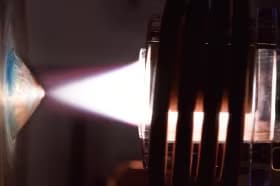What is ICP-MS (Inductively Coupled Plasma Mass Spectrometry)?
Basics of Inductively Coupled Plasma Mass Spectrometry
1. Overview of ICP-MS Analysis
Inductively coupled plasma mass spectrometry (ICP-MS) is an analytical technique used to determine the concentrations of elements and their isotopes by ionizing elements in the samples with extremely high-temperature Argon (Ar) plasma and then using a mass spectrometer to measure the number of ions based on their mass-to-charge ratio (m/z).
Elements with a specific mass are ionized by Ar plasma and mainly become monovalent ions. ICP-MS determines which elements are in the sample (qualitative), and the amount of each element with the sample (quantitative), based on the m/z of detected ions and the number of ions detected during a specified time of detection. Because liquid samples are introduced to the Ar plasma as an aerosol and undergo very efficient ionization, ICP-MS can measure most sample elements at parts-per-trillion (ppt) levels. ICP-MS is the most sensitive elemental analysis technique and is used for trace and ultra-trace element analysis in a variety of fields, including environmental, food, medical, life science, materials science, and manufacturing.

2. What is ICP?
ICP is the abbreviation for inductively coupled plasma. Plasma is often called the fourth state of matter after solid, liquid, and gas, and refers to a gas of charged particles generated by ionization. Plasma exists in a very high-energy (high temperate) state and the temperature of the Ar plasma used in ICP-MS ranges between 6,000 K and 10,000 K.
EICP creates Ar plasma by feeding Ar gas into the torch at approximately 10 or more L/min while applying (inducing) a high-frequency current (27 MHz) to a radiofrequency (RF) coil positioned at the end of the torch. Some Ar atoms in the gas are ionized when they collide with electrons accelerated by the induced current. Electrons released by these collisions collide with, and cause ionization of, additional Ar atoms and a chain of reactions forms that creates the Ar plasma.
Due to a phenomenon called the high-frequency skin effect, this plasma forms a donut-shaped structure with a higher temperature on its outside and a lower temperature at its center. The sample is ionized efficiently without diffusion by introducing it to the lower temperature center of the plasma.

-

Plasma generated (from the side)
-

Plasma generated (from the top)








